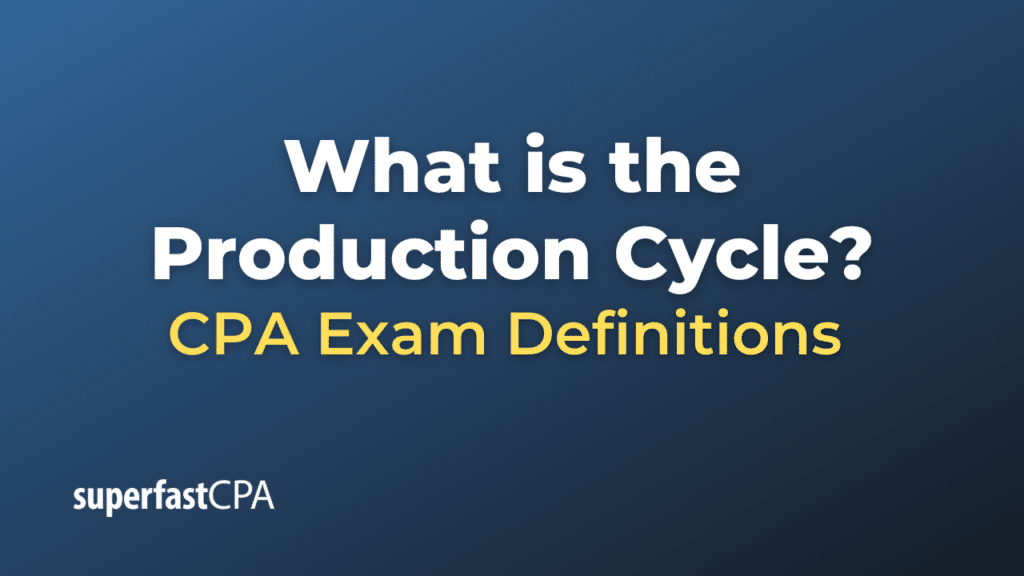Production Cycle
The production cycle, also known as the operating cycle or the manufacturing cycle, refers to the series of steps a company undertakes to transform raw materials into finished goods. The duration of the production cycle can vary based on the complexity of the product, the efficiency of the manufacturing process, and the nature of the business. Here are the typical steps in the production cycle:
- Procurement of Raw Materials: The cycle begins with the procurement of raw materials needed for production. This can include everything from raw materials like steel or wood to subcomponents purchased from other manufacturers.
- Storage of Raw Materials: The raw materials are stored until they are needed in the production process.
- Production Planning: Production planning involves deciding what products to manufacture, when, and in what quantity, based on factors like demand forecasts, resource availability, and capacity of the production facility.
- Manufacturing Process: This is where the actual production happens. Raw materials are converted into finished products through various processes such as assembly, cutting, shaping, etc.
- Quality Control and Inspection: The products are inspected to ensure they meet the quality standards of the company. Any defective products are either discarded or repaired.
- Storage of Finished Goods: The finished goods are stored until they are sold.
- Delivery to Customers: Finally, the products are shipped to customers as per their orders.
It’s worth noting that many companies are continually looking for ways to streamline and optimize their production cycle to reduce production time, minimize costs, and meet customer demand more effectively. Techniques such as just-in-time inventory management, lean manufacturing, and automation can help improve the efficiency of the production cycle.
Example of the Production Cycle
Let’s take a simple example of a bakery that makes bread. Here is how the production cycle would work in this case:
- Procurement of Raw Materials: The bakery purchases the raw materials necessary to make bread, such as flour, yeast, salt, and sugar.
- Storage of Raw Materials: These raw materials are then stored until they’re needed for production.
- Production Planning: The bakery decides on the quantity and types of bread (like whole wheat, rye, or sourdough) to be baked each day, based on anticipated demand, historical sales data, and special orders.
- Manufacturing Process: The actual baking takes place. This involves mixing the ingredients, kneading the dough, letting it rise, shaping it into loaves, and then baking it in the oven.
- Quality Control and Inspection: After baking, the loaves are inspected to ensure they have baked properly and are of good quality. Any substandard loaves are removed.
- Storage of Finished Goods: The finished loaves are stored until they’re sold. This might be on the shelves of the bakery’s storefront or in a storeroom if the bread is being distributed to other retailers.
- Delivery to Customers: Finally, the bread is sold to customers in the bakery or delivered to local grocery stores.
Throughout this process, the bakery monitors and controls each step to ensure efficiency and quality, continually looking for ways to optimize the production cycle. For example, they might adjust their production planning based on changes in demand, or they might implement new baking techniques that improve the consistency and quality of their bread.













